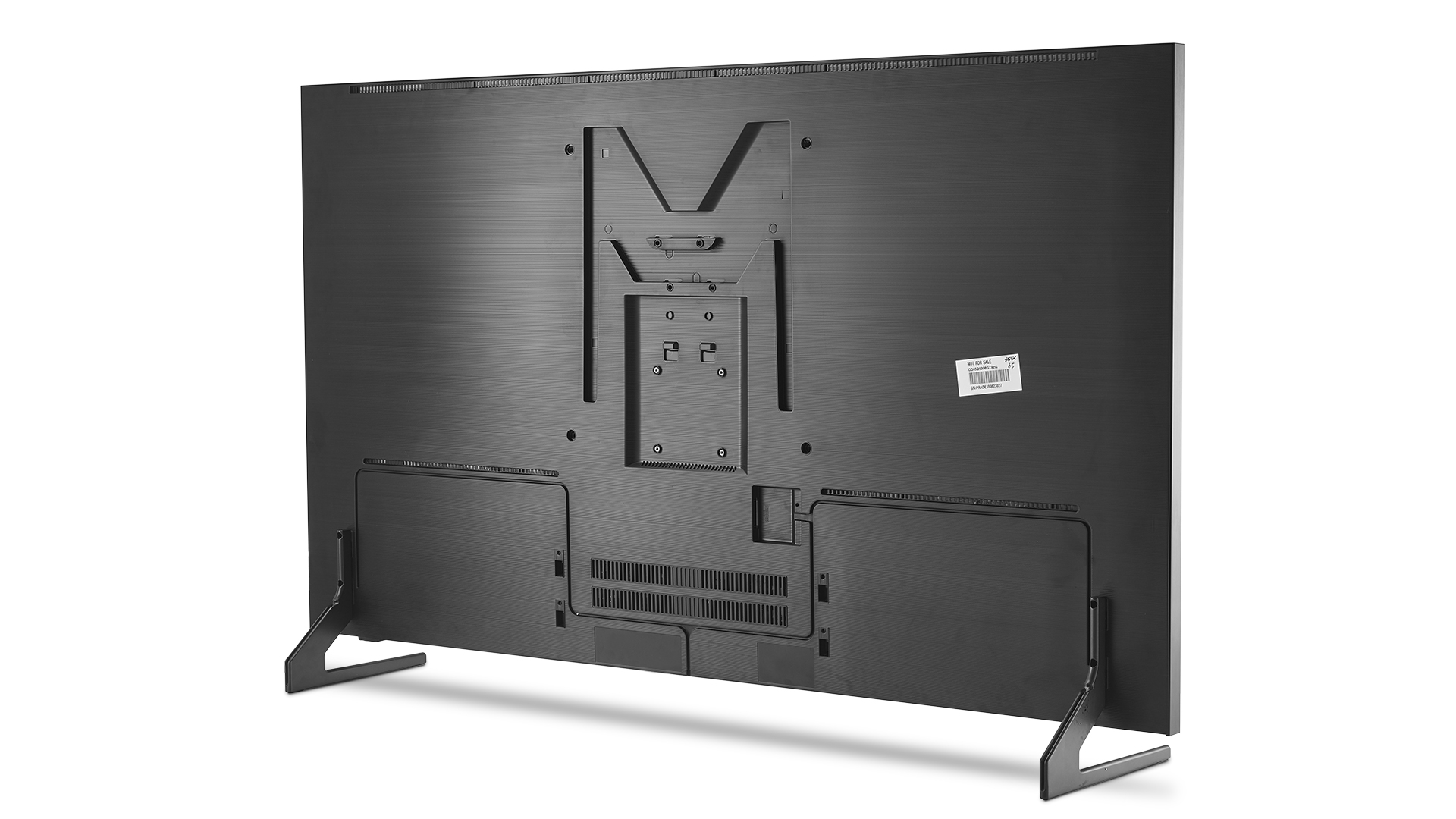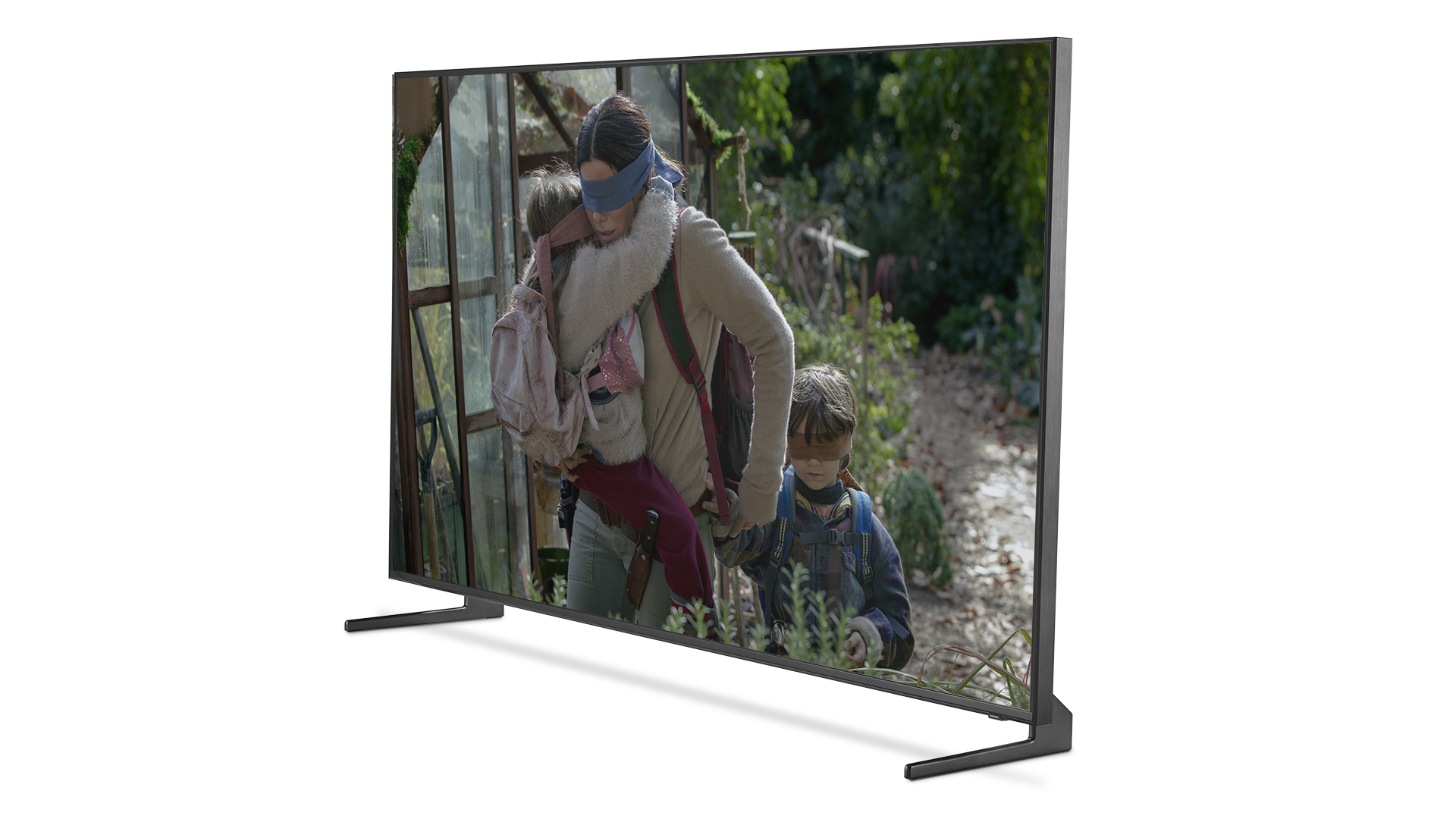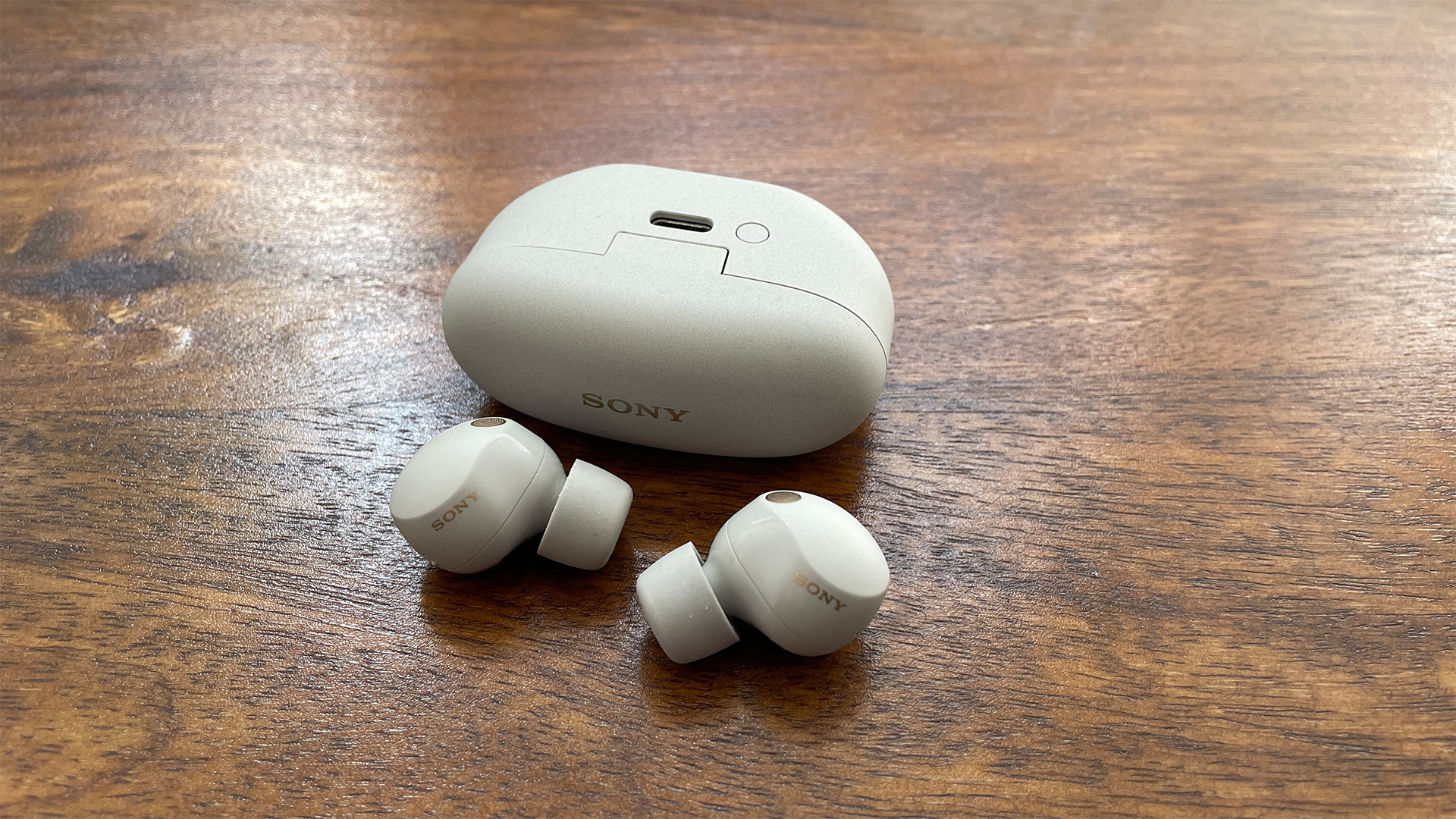What Hi-Fi? Verdict
As a glimpse of the future the Q900R is hugely impressive, but Samsung’s own Q9FN does some things better and is way more affordable
Pros
- +
Native 8K is gorgeous
- +
Deep, detailed blacks
- +
Capable upscaler
Cons
- -
No 8K content to watch
- -
Colours lack vibrancy
Why you can trust What Hi-Fi?
There are those who will tell you that there’s no point in 8K video – ‘4K is enough’, they say, ‘you can’t even tell the difference’. But they have almost certainly not seen 8K in action. If they had, we suspect they’d be singing a different tune, because 8K is glorious.
But the big issue with 8K is that there’s no readily available content, nor any firm plans for it to be made available, either on disc or via streaming services such as Netflix or Amazon Video.
All of which means that any current 8K TV needs to be at least as good as the best 4K TVs when it comes to the 4K and HD (and, to a lesser extent, standard-def) content that we will be watching for the foreseeable future.
That’s what Samsung’s promising from its Q900R range – the first commercially available 8K TVs in the UK. The company says that by using an advanced, machine-based upscaling engine, it can make content of any resolution look better on its 8K screens.
We were impressed by the Q900R in 85in form, but the QE65Q900R offers a direct comparison to the company’s 2018 flagship 4K set, the QE65Q9FN. We’re hoping the 65in version is at least as good as the QE65Q9FN, with 8K compatibility thrown in for good measure.
Build

If you’re expecting the UK’s first 8K TVs to boast a revolutionary design, you might be disappointed. The Q900R doesn’t do a great deal to distinguish itself from Samsung’s existing flagship 4K models.
Along both sides and the top of the screen are thin, squared bezels, while the bottom has a slightly thicker lip, with the small Samsung logo moved from the centre to the right.
The latest hi-fi, home cinema and tech news, reviews, buying advice and deals, direct to your inbox.
The 65in Q900R is marginally thinner than the 65in Q9FN, but looks thicker thanks to a completely flat back and straight, untapered edges. It gives the Q900R the look of a large picture frame when wall-mounted, particularly if you use Samsung’s own No Gap Wall Mount.
The two feet lack the elegance of the Q9FN’s pedestal stand, but they can be positioned at either the extremes of the bottom edge or closer to the centre. They can also be stored in dedicated slots in the rear panel for safekeeping should you choose to wall-mount at a later date.
The general neatness of the design is enhanced by the inclusion of Samsung’s OneConnect concept, which sees all inputs moved from the rear panel to an external box, with the two connected by a thin, semi-transparent cable. This cable even carries power, so the TV itself doesn’t need to be connected directly to a power socket.
Unlike the extra large version of the OneConnect box found on the 85in version, the unit is identical in size (and connection layout) to that of the QE65Q9FN. Samsung says that it will swap this OneConnect box for one with 2.1-specification HDMIs when available – if requested.
Features

In the meantime, you get four HDMI 2.0-spec connections, the first of which supports some HDMI 2.1 features, including variable refresh rate – not that you’re likely to be taking advantage any time soon.
Other physical connections include three USBs, ethernet (the set also features wi-fi, of course), an optical output, one aerial socket and two satellite connections – although the TV doesn’t support Freesat, so you’re unlikely to take advantage of the satellite connections if you’re in the UK. As is now the norm for Samsung, there’s no physical headphone output, with the intention that you use Bluetooth instead.
Samsung’s TV operating system does nothing different here compared to when used via a 4K QLED, but that’s no bad thing. This remains arguably the slickest, most intuitive TV user experience currently available, with Samsung having done a great job of giving easy access to the most useful features and settings, and hiding or removing less necessary ones.
Physical sources and apps are given equal billing on the colourful home screen and can be reordered or removed as required. The selection of streaming services available is exceptional, with Netflix, Amazon Video, BBC iPlayer and Rakuten all on board in 4K and HDR. Google Play Movies & TV is also 4K (but doesn’t have HDR); ITV Hub, All 4 and Demand 5 complete the roster of catch-up services, while Now TV and BT TV allow access to exclusive content, including sport. Plex is on board for those with their own libraries of digital content; and music streaming is provided by Spotify, Deezer, Tidal and TuneIn.

Screen type QLED
Resolution 8K
Operating system Samsung Tizen
HDR formats HDR10, HDR10+, HLG
HDMI 4
USB 2
Optical 1
The Q900R also includes apps for controlling other SmartThings devices, such as a robot vacuum or smart lighting, and Samsung’s Ambient mode, which enables the screen to be used as a display for artwork, photos or even a pattern to help it blend into the wallpaper that surrounds it.
Then, of course, there are the core picture specs. As an 8K set, the full resolution is 7680 x 4320, and at this 65in size that translates to a pixel density of 136 pixels per inch – double that of the 65in Q9FN. Both TVs have full-array, direct LED backlights with around 500 independently dimmable zones, but the Q900R boasts an even greater peak brightness figure than the Q9FN – 3000 nits to 2000 nits. That’s 1000 nits less than its 75in and 85in siblings, but we suspect a slight reduction in peak brightness might prove to be more help than hindrance.
Since we reviewed the QE85Q900R, Samsung has issued a software update for the whole Q900R range, which is designed to address some of the issues raised regarding picture quality – notably the relative lack of black depth. The 65in version we’re reviewing here has the updated software, and we’ll be revisiting the 85in model in due course.
HDR is available in the HLG form favoured by the BBC, the industry standard HDR10 format, and Samsung’s own HDR10+. The latter is a Dolby Vision-rivalling format with support for dynamic metadata. It has been slow to get off the ground, which makes the lack of Dolby Vision disappointing, but Samsung and partners are promising that 2019 will see the release of more HDR10+ content.
Picture

Though the only 8K content available was typical demo footage, designed to show a TV in its best light – colourful patterns, slow pans over scenic vistas – it’s also revealing enough to convince us of the value of the resolution in the long run.
Predictably, the major upgrades over 4K are to detail and sharpness. Those scenic vistas are teeming with fine detail that brings the footage to life, and the overall image is ridiculously crisp. Those traits also combine to make the picture appear deeper, more solid and more three-dimensional. In fact, it simply looks more lifelike.
Nor do you have to sit with your nose against the panel to appreciate the upgrade. Sure, the effect is more pronounced the bigger the screen and the closer you sit to it, but the overall crispness and solidity is still impressive on this 65in model at what most would consider a 'normal' viewing distance.
All of that said, to really pass judgement on the QE65Q900R’s 8K performance, we will need to test the TV with some ‘real world’ 8K video (whenever that arrives).
In the meantime, everything you watch is going to be of a lower resolution than 8K, and so the Q900R really needs to be at least as good as the Q9FN with all of that. In some ways it is, but in others it isn’t.
Firstly, upscaling. Having watched 4K, 1080p and even standard-def content from a variety of sources on the two sets, we wouldn’t have been able to tell the difference between the two in terms of native resolution.
In some ways, that’s impressive: the Q900R is having to work significantly harder to display the content, adding pixels to fill the gaps between those of the source and those of its panel. With standard-def, the amount of information being fabricated by the TV is staggering, but it does so with complete confidence. Even the fact that it produces a supremely sharp, low-noise and fabulously detailed 4K picture – just like that of the Q9FN – is quite the achievement.
But, on the other hand, it’s a touch disappointing that the AI-upscaler doesn’t go as far as delivering on Samsung’s promise of 4K looking better than ever on its 8K models. In terms of insight, there’s no benefit in spending the extra money on the 8K television.
That said, the central AI-upscaler is learning all the time, and the Q900R will be regularly updated so that it can benefit from the increased upscaling intelligence, so there may come a time when it surpasses its 4K siblings.
Resolution aside, you might expect that the QE65Q900R would perform just like the QE65Q9FN, albeit with increased brightness. It comes as a surprise then that there are fundamental differences in the characters of the two TVs.
The most obvious difference is in the colours, which are markedly paler on the new Q900R. This is quite possibly an intentional move on Samsung’s part, designed to address suggestions that the awesome vibrancy of the colours on its Q9FN should be tempered with greater subtlety. However, Samsung has gone a little too far the other way, with too much of the vibrancy missing and a hint of greyness sneaking in, particularly with skin tones.
It’s most noticeable when watching HDR content, which pops from the screen of the Q9FN and is just a little flatter and duller on the Q900R. The Q9FN’s colours might not be truly neutral, but we’d say they’re closer than those of the Q900R, and more enticing to boot.
This slight paleness to colours doesn’t have an impact on blacks. In fact, they are significantly deeper than those of the QE85Q900R, possibly as a result of the software update. Blacks are still a touch less inky than those of the Q9FN, but they’re also more detailed while still having a big, positive effect on contrast when compared to the 85in Q900R. Here, Samsung has struck a good balance.
The increased peak brightness is far from revelatory, but it is noticeable, even when watching standard dynamic-range content. Here, whites are brighter, whiter and more dramatic. What’s more, the 65in Q900R is largely free of backlight blooming, unlike its 85in sibling. Look hard and you will spot a slight halo around the whitest objects on the blackest backgrounds, but during normal watching you simply won’t notice. This is an excellent backlight, up there with that of the Q9FN.
Viewing angles are a slight issue, though. They’re not bad, particularly compared to other LCDs and QLEDs, but they’re not perfect in the way they are from an OLED.
Motion, meanwhile, is very good. Just a little bit of processing (the default settings of the Custom mode work well) sharpens and smooths motion without making everything look artificially enhanced or introducing much in the way of artefacts. It’s not spot-on in the way motion from many Sony TVs is, but it’s very good in its own right and a slight improvement on that of the Q9FN.
Sound

While the lion’s share of the focus is on the Q900R’s picture quality, it’s worth pointing out that it is sonically superior to its 4K siblings. This is far from a revelatory upgrade, but the 8K set sounds more fuller-bodied and dynamic.
The delivery is a little bottom-heavy, with some deep bass notes coming over a little muffled, but the overall balance is enjoyable, particularly if you’re used to the rather reedy delivery most typically associated with flatscreen TVs. The discrete soundbars of the likes of the Panasonic TX-55FZ952B sound better, but the Samsung sounds good considering its speakers are almost invisible.
Verdict
We’re convinced that 8K is worthwhile, and with a decent selection of 8K content available, we’re sure the QE65Q900R would be worthy of five stars.
But without even a timescale for availability, the highest quality content we’re going to be watching for the foreseeable future is 4K. Even if the Q900R put in an identical performance to that of the Q9FN with 4K and below, while throwing a bit of future-proofing into the deal, we’d be tempted to recommend it to those lucky enough to have a big budget for their next TV.
The problem is that in some ways Samsung’s own flagship 4K model, the Q9FN, is better. Somewhat surprisingly, the differences aren’t in the resolution, with the Q900R’s upscaler doing an impressive job - they're in the colours, which are less vibrant and enticing on the 8K model.
Too many times during testing our eyes were drawn to the Q9FN over the Q900R. Given that that the latter is roughly twice the price of the former, and that an 8K resolution is currently no advantage, we know which TV we would choose.
But Samsung has already proven its willingness to tweak the picture performance of these new 8K models, so perhaps a colour-enhancing software update may surface in the not too distant future.
SCORES
- Picture 4
- Sound 4
- Features 5
MORE:
8K TV - everything you need to know
See all our Samsung reviews
What Hi-Fi?, founded in 1976, is the world's leading independent guide to buying and owning hi-fi and home entertainment products. Our comprehensive tests help you buy the very best for your money, with our advice sections giving you step-by-step information on how to get even more from your music and movies. Everything is tested by our dedicated team of in-house reviewers in our custom-built test rooms in London, Reading and Bath. Our coveted five-star rating and Awards are recognised all over the world as the ultimate seal of approval, so you can buy with absolute confidence.

